Respiratory physician Lutz Beckert considers chronic obstructive pulmonary disease management, including the prevention of COPD, the importance of smoking cessation and pulmonary rehabilitation, and the lifesaving potential of addressing treatable traits. He also discusses the logic of inhaler therapy, moving from single therapy to dual and triple therapy when indicated, as well as other aspects of management
Last Crusade: Building, membership woes force NZMA’s hand
Last Crusade: Building, membership woes force NZMA’s hand

Here at New Zealand Doctor Rata Aotearoa we are on our summer break! While we're gone, check out Summer Hiatus: Stories we think deserve to be read again! This article was first published on 26 October.
Chosen by Martin Johnston: Devotees of financial and membership data probably saw it coming, but the rest of us were startled by the rapid death spiral of the NZMA. In a matter of weeks, this organisation with a proud history stretching back more than a century, was gone
1886 – NZMA founded
1887 – First issue of New Zealand Medical Journal published
1896 – NZMA disestablished and a New Zealand branch of the British Medical Association (BMA) formed
1938 – BMA strenuously opposed first Labour Government’s efforts to establish a free national health service. The result in primary care is a privately owned system with varying levels of State subsidies
1967 – Medical Association of New Zealand achieves autonomy from BMA
1976 – Renamed New Zealand Medical Association
1989 – Association of Salaried Medical Specialists formed from four groups: NZMA's specialist committee, the Whole-Timers Association, the Part-Timers Association and a body representing hospital-employed dentists
2002 – Journal becomes an online publication
2006 - NZMA loses MPS contract held for 50 years and worth around $500,000
2011 - NZMA releases Health Equity Position Statement
2020 – NZMA chair Kate Baddock apologises to members after earlier defending association’s opposition to legalising recreational cannabis
2021 – NZMA supports fully empowered Māori Health Authority
2022 – NZMA issues “red letter” expressing concerns over Government’s expectations for community COVID-19 care
There are many different groups asking for their money. I don’t think NZMA comes high on that list
Nothing much is permanent. Any kind of organisation, from an empire to a membership association, can survive for decades or centuries, only to suddenly turn up its toes and die.
We are witnessing one such death spiral as members digest a proposal that the NZMA be liquidated.
The matter will be put to association members at two general meetings, one this coming Sunday and the second late next month.
The NZMA board’s proposal to shut up shop in one sense came as a shock, because the 136-year-old body representing the breadth of the medical profession seems such a certain and immovable part of New Zealand society.
In another sense, it seems obvious that the association’s death would come one day, because of the open secret of its low membership and the obvious question facing young doctors: “Why should I voluntarily pay up to $917 a year to belong to this organisation?”
Sadness has been the widespread response to the news.
It took just days for the NZMA board to propose the liquidation after acting chief executive Esther Munro, who began with the association as its marketing and communications manager, reported with her colleagues on the dire financial situation – a situation much worse than had been thought.
Ms Munro began the job on 1 March, replacing Lesley Clarke, who was chief executive for 10 years.
The report first went to the finance committee; NZMA chair Alistair Humphrey, a Christchurch specialist GP and public health medicine physician, is a member.
“The committee saw the writing on the wall,” Dr Humphrey tells New Zealand Doctor Rata Aotearoa.
“They advised the board and the board less than a week later met, then provided their advice to the membership,” he says.
On 6 May, the association issued a media release with the blunt title: “NZMA board recommend liquidation of association.”
In an hour-long interview, Dr Humphrey explains what he understands to have caused the association’s demise – static numbers of long-standing members, inability to recruit young doctors, headquarters building troubles, and COVID-19 restrictions – and why the board thinks there is no alternative to liquidation.
Even before the final decision due next month, the process of closing the association is well under way. Of the seven employees before the close-down began, one of whom works for the subsidiary that hosts the New Zealand Medical Journal, four have been laid off and been given redundancy payments. Office furniture from the Wellington headquarters is being sold. And the association plans to default on the lease – stop paying – once the building is fully vacated, because it won’t have any money left.
The NZMA was once, and the British Medical Association still is, a union for doctors. But the NZMA finds itself sitting on the other side of the industrial table, representing general practice employers in the Primary Health Care Multi-Employer Collective Agreement (MECA).
Labour law changes in the 1980s meant that to represent an employees’ collective in industrial bargaining, an organisation needed to be registered as a union. The Association of Salaried Medical Specialists (ASMS), which was formed out of the NZMA in 1989, took on the job. Four years earlier, the Resident Doctors’ Association (RDA) had been founded to look after the newer doctors.
Where once pan-medical advocacy and industrial representation were wrapped up in one body with one fee, now doctors had a choice of two.
It’s a crowded market and it’s becoming more crowded,” Dr Humphrey says. “A young doctor has a list of things they have to pay for when they become a house surgeon: probably their indemnity first of all, then in due course college, registration fees, often paid by their employer but [not] when they become a GP. Then there are the unions, the RDA and the ASMS.
“There are many different groups asking for their money. I don’t think NZMA comes high on that list.”
Total NZMA membership is 4812, of whom 1251 pay full fees (982 GPs and 269 other specialists). The rest are on various lower or no fees.
The 2018 medical student members pay less than $10 a year and honorary members pay nothing.
Dr Humphrey says that although total membership has declined, the number paying full fees has remained relatively stable, at around 1200, for 20 years. These are more likely to be older doctors, many of them retired, who value their membership highly.
“The issue for at least 20 years has been recruitment of new members – where were we going to get our new members from.”
The association’s HQ is NZMA House at 26 The Terrace, Wellington. The association has been at the site since 1927 and, in 1938, moving into a new, three-storey building it had erected there. It was opened by health minister Peter Fraser, who was battling the medical profession over his Labour Government’s national health service plans.
In 2012 the NZMA had to move out of the building after an earthquake risk assessment found it was not up to scratch. It had been declared a heritage building and if it was to be demolished, the façade had to be retained.
Stephen Child, NZMA chair from 2015 to 2017, asks: “Who is going to buy an empty lot with a façade?”
Dr Child and other former chairs agree the association made the “least bad” decision in opting to have a new, taller building erected behind the façade. However, geotechnical problems with the land pushed up the cost.
Then, after NZMA staff occupied the new building in early 2018, there were difficulties finding tenants, despite advice that it would be easy to fill the building, even at rents higher than the association’s bankers considered to be acceptable.
The association breached a bank covenant in not having it fully tenanted within 12 months and the decision was made to sell the building and lease back space.
Under financial pressure, the NZMA sold the building quickly and in an annual report stated an “impairment” of more than $1.5 million. It is unclear whether that relates to the sale price, the tenanting difficulties, or both. The lease signed in 2018 is for 15 years and has more than 10 years to run. The association has asked, without success, to be released from the lease.
“The only way we could avoid going into liquidation was to approach the landlord and ask if they would allow us to break the lease,” Dr Humphrey says.
“The landlord is trying to sell the building. The only concession the landlord was willing [to offer was] to release us from the lease [was] if we paid $300,000 to $400,000 to reorganise the building…in a way that makes it easier for them to sell. We just don’t have the money to do that.”
Therefore the association intends simply to walk away, leaving it open to civil court action from the landlord to recover unpaid rent.
“Effectively, we haven’t got any money left. They won’t gain anything and they understand that,” Dr Humphrey says.
That critical lack of money is what motivated the board to act so quickly. Ms Munro’s paper proposing liquidation shows the NZMA’s reserves have been on a glide path towards zero from more than $1.2 million in 2018.
About half of membership income is paid monthly, the rest annually from October to December. That lumpy cash flow leaves the NZMA at risk of going into the red.
The board has long had a policy of not allowing its reserves to drop below four months’ spending, which is currently $520,000.
“Current cash in the bank,” Ms Munro’s report states, “is sitting around $460,000. Given the established cash flow pattern, the association’s reserves will continue to decrease, month on month, until October billing for annual subscriptions in the 2022/23 financial year.”
In the past, the association has considered taking a bridging loan from one of the benevolent funds it’s involved with. But the report questions the ethics of that because the fund is for the relief of medical professionals and their families. And, anyway, the association couldn’t afford an application to the High Court to test the idea.
Previous chair Kate Baddock says it is unfortunate the board didn’t talk to the NZMA senate, a body comprising several former chairs, before making its liquidation proposal, although she also recognises the board has no obligation to consult the senate.
Dr Humphrey says the situation was evolving rapidly and the board advised the senate as soon as the decision was made.
“The general view of the board was most of the ideas had been tried by previous members and we are not going to get much by a long, drawn-out discussion and we need to make a clean break and get on with it.
“In fact, if anything, it would have opened up a can of worms, potentially, without us being able to wrap everything up for our staff. We did have to act very quickly.”
He says the ethical thing to do was to make redundancy payments to staff when the NZMA still had the money to do so, rather than to try a “last throw of the dice” on declining finances and hope enough member fees would come in to keep operating.
The NZMA board and staff have explored every option they consider viable, Dr Humphrey says.
Ms Munro’s report outlines some of these options. It points out that, without varied income streams including some Government funding, the NZMA is vulnerable to external shocks, such as the missed opportunity to sign up new members at in-person conferences that were cancelled because of COVID.
The association had been receiving income through its involvement in the GP CME conferences and with Medical Financial Advisory Services Ltd, as well as getting bargaining fees for representing employers in the Primary Health Care MECA negotiations.
Ms Munro reported that recent efforts to create other partnerships, “with real estate agents, car sales companies, architects and the like”, had unfortunately proven fruitless.
In the 6 May media release, Dr Humphrey said the association was in talks with other sector groups about ongoing custodianship of important NZMA assets, including the journal, the Code of Ethics, the benevolent funds and New Zealand’s membership of the World Medical Association.
The Medical Council recognises the importance of the Code of Ethics. In an email, chair Curtis Walker says the council will work with the NZMA to ensure appropriate guidance is maintained, including from the council’s own Good Medical Practice publication and its other standards.
The Munro report indicates merging with the ASMS was considered but was “not viable, as they are not interested”.
ASMS executive director Sarah Dalton said, in a 10 May interview, NZMA had made no formal approach. However, ASMS would never consider a merger with a non-union, particularly because of NZMA’s role representing employers in the primary care MECA.
Dr Humphrey says various merger and partnership options were canvassed for resuscitating the NZMA, including becoming a branch of the Australian Medical Association (AMA), repeating what the NZMA did with the British Medical Association from 1896 to 1967.
He says he is not prepared to disclose who those conversations were with, “because they didn’t go anywhere and they were confidential at the time”.
He believes joining the Australians would probably drive away New Zealand members, and he doubts the AMA would be interested anyway: “They would simply be carrying us.”
Some have wondered whether the New Zealand Council of Medical Colleges could pick up some functions of the NZMA. Council deputy chair and RNZCGP president Sam Murton says the council will discuss the NZMA at its next meeting. Dr Murton doesn’t say what she thinks should happen.
She says she belonged to the NZMA as a student but ceased being a member some years ago. “There are so many organisations you can belong to. You have to pick and choose.”
Dr Child is planning to oppose liquidation, hoping a stripped-back NZMA can survive – although he acknowledges he hasn’t yet fully analysed the financial report.
Dr Humphrey says various bodies will be able to pick up NZMA’s efforts, but suggests it will be “more fragmented in future”. “It would be nice to think that somewhere along the line there is some sort of resurrection of something similar to the NZMA, but it needs to be driven by younger doctors.
“Students have been terrific and articulate in the way they have influenced NZMA, but they need to put their money where their mouth is if they want a national organisation.”
NZMA
- 4812 total members (1251 full fee-paying members – 982 GPs and 269 other specialists)
- $917 for a full member; lower fees charged for various other categories, including trainees.
RNZCGP
- 5675 members (including registrars and associates)
- $1252.17 for a full member; lower fees for part-timers and recent graduates.
Association of Salaried Medical Specialists
- 5330 members
- $1200 for a full member.
General Practice Owners Association of Aotearoa New Zealand
- about 300 general practice or urgent care centre businesses (including corporate and multiple practice businesses)
- 30c per patient enrolled in a practice, eg, $1500 + GST for 5000-patient practice.
Discussions are under way with several organisations interested in taking on the New Zealand Medical Journal, says NZMA acting chief executive Esther Munro.
The journal is continuing, with the production editor likely staying on until mid-July, says Ms Munro in an email. “It is likely the journal will continue in some form in future,” she says. The journal’s first issue was published in 1887, a year after the NZMA was founded. It became an online publication in 2002. Ms Munro says the journal, free to members, is underwritten by the NZMA by roughly $100,000 a year.
Frank Frizelle, editor for 20 years, says it was a shock to learn the NZMA board was recommending liquidation, but he had been told to continue business as usual. The journal has subscribers from overseas as well as local educational and institutions, but a large part of subscription income is linked to NZMA membership, “so that is, without doubt, an issue”, says Professor Frizelle.
The University of Otago professor of surgery says whether the journal has a new owner or stands alone, it needs to maintain editorial freedom, “so we can continue to discuss issues that are sometimes uncomfortable…particularly regarding access to healthcare, issues around equity and the influence of ethnicity on outcomes”. “All that stuff about how New Zealand healthcare is actually delivered. We are a journal that publishes about New Zealand, this is our focus and it is important that we try to maintain that focus. We need to grow and explore themes that are very relevant to New Zealand.”
He says the NZMA has gone out of its way to allow the journal complete editorial freedom, including the right to criticise the association.

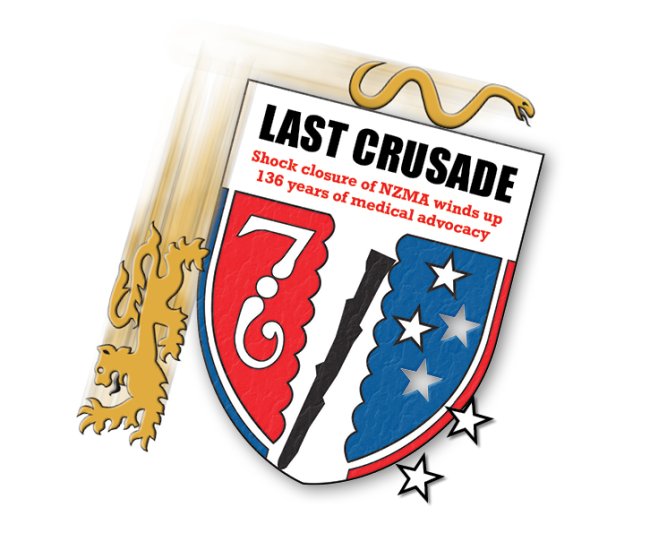

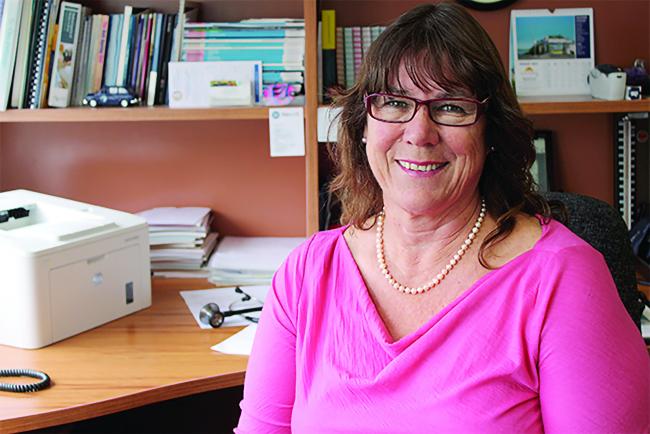
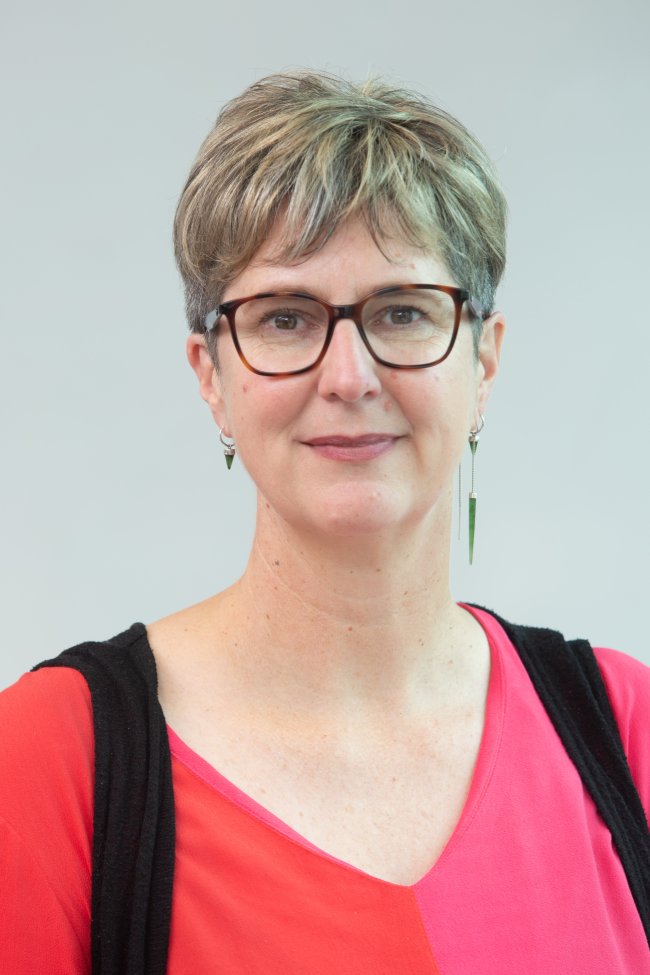
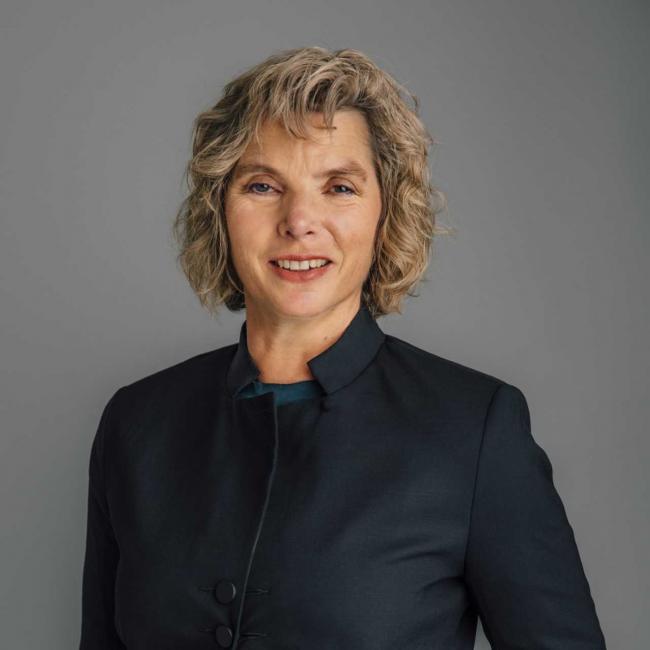




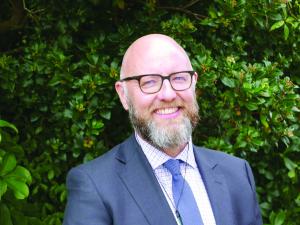



![Barbara Fountain, editor of New Zealand Doctor Rata Aotearoa, and Paul Hutchison, GP and senior medical clinician at Tāmaki Health [Image: Simon Maude]](/sites/default/files/styles/thumbnail_cropped_100/public/2025-03/Barbara%20Fountain%2C%20editor%20of%20New%20Zealand%20Doctor%20Rata%20Aotearoa%2C%20and%20Paul%20Hutchison%2C%20GP%20and%20senior%20medical%20clinician%20at%20T%C4%81maki%20Health%20CR%20Simon%20Maude.jpg?itok=-HbQ1EYA)
![Lori Peters, NP and advanced health improvement practitioner at Mahitahi Hauora, and Jasper Nacilla, NP at The Terrace Medical Centre in Wellington [Image: Simon Maude]](/sites/default/files/styles/thumbnail_cropped_100/public/2025-03/2.%20Lori%20Peters%2C%20NP%20and%20advanced%20HIP%20at%20Mahitahi%20Hauora%2C%20and%20Jasper%20Nacilla%2C%20NP%20at%20The%20Terrace%20Medical%20Centre%20in%20Wellington%20CR%20Simon%20Maude.jpg?itok=sUfbsSF1)
![Ministry of Social Development health and disability coordinator Liz Williams, regional health advisors Mary Mojel and Larah Takarangi, and health and disability coordinators Rebecca Staunton and Myint Than Htut [Image: Simon Maude]](/sites/default/files/styles/thumbnail_cropped_100/public/2025-03/3.%20Ministry%20of%20Social%20Development%27s%20Liz%20Williams%2C%20Mary%20Mojel%2C%20Larah%20Takarangi%2C%20Rebecca%20Staunton%20and%20Myint%20Than%20Htut%20CR%20Simon%20Maude.jpg?itok=9ceOujzC)
![Locum GP Helen Fisher, with Te Kuiti Medical Centre NP Bridget Woodney [Image: Simon Maude]](/sites/default/files/styles/thumbnail_cropped_100/public/2025-03/4.%20Locum%20GP%20Helen%20Fisher%2C%20with%20Te%20Kuiti%20Medical%20Centre%20NP%20Bridget%20Woodney%20CR%20Simon%20Maude.jpg?itok=TJeODetm)
![Ruby Faulkner, GPEP2, with David Small, GPEP3 from The Doctors Greenmeadows in Napier [Image: Simon Maude]](/sites/default/files/styles/thumbnail_cropped_100/public/2025-03/5.%20Ruby%20Faulkner%2C%20GPEP2%2C%20with%20David%20Small%2C%20GPEP3%20from%20The%20Doctors%20Greenmeadows%20in%20Napier%20CR%20Simon%20Maude.jpg?itok=B0u4wsIs)
![Rochelle Langton and Libby Thomas, marketing advisors at the Medical Protection Society [Image: Simon Maude]](/sites/default/files/styles/thumbnail_cropped_100/public/2025-03/6.%20Rochelle%20Langton%20and%20Libby%20Thomas%2C%20marketing%20advisors%20at%20the%20Medical%20Protection%20Society%20CR%20Simon%20Maude.jpg?itok=r52_Cf74)
![Specialist GP Lucy Gibberd, medical advisor at MPS, and Zara Bolam, urgent-care specialist at The Nest Health Centre in Inglewood [Image: Simon Maude]](/sites/default/files/styles/thumbnail_cropped_100/public/2025-03/7.%20Specialist%20GP%20Lucy%20Gibberd%2C%20medical%20advisor%20at%20MPS%2C%20and%20Zara%20Bolam%2C%20urgent-care%20specialist%20at%20The%20Nest%20Health%20Centre%20in%20Inglewood%20CR%20Simon%20Maude.jpg?itok=z8eVoBU3)
![Olivia Blackmore and Trudee Sharp, NPs at Gore Health Centre, and Gaylene Hastie, NP at Queenstown Medical Centre [Image: Simon Maude]](/sites/default/files/styles/thumbnail_cropped_100/public/2025-03/8.%20Olivia%20Blackmore%20and%20Trudee%20Sharp%2C%20NPs%20at%20Gore%20Health%20Centre%2C%20and%20Gaylene%20Hastie%2C%20NP%20at%20Queenstown%20Medical%20Centre%20CR%20Simon%20Maude.jpg?itok=Z6u9d0XH)
![Mary Toloa, specialist GP at Porirua and Union Community Health Service in Wellington, Mara Coler, clinical pharmacist at Tū Ora Compass Health, and Bhavna Mistry, specialist GP at Porirua and Union Community Health Service [Image: Simon Maude]](/sites/default/files/styles/thumbnail_cropped_100/public/2025-03/9.%20Mary%20Toloa%2C%20Porirua%20and%20Union%20Community%20Health%20Service%20in%20Wellington%2C%20Mara%20Coler%2C%20T%C5%AB%20Ora%20Compass%20Health%2C%20and%20Bhavna%20Mistry%2C%20PUCHS%20CR%20Simon%20Maude.jpg?itok=kpChr0cc)